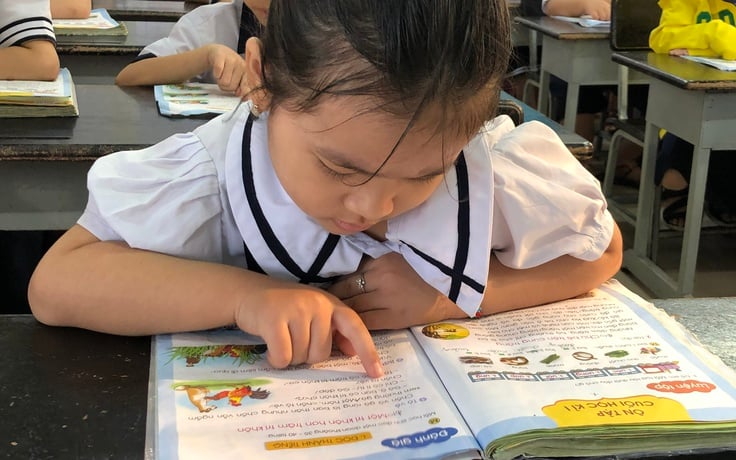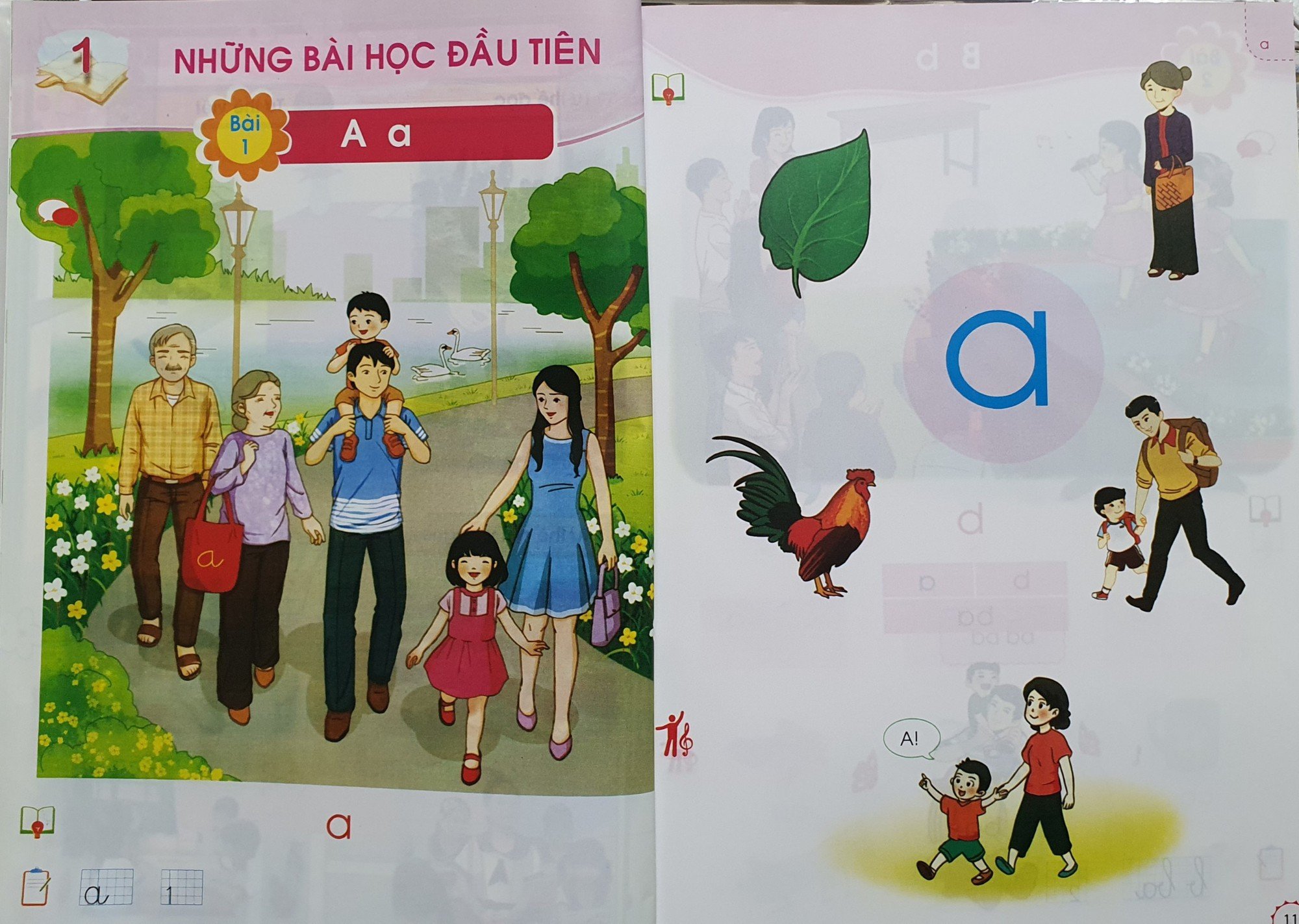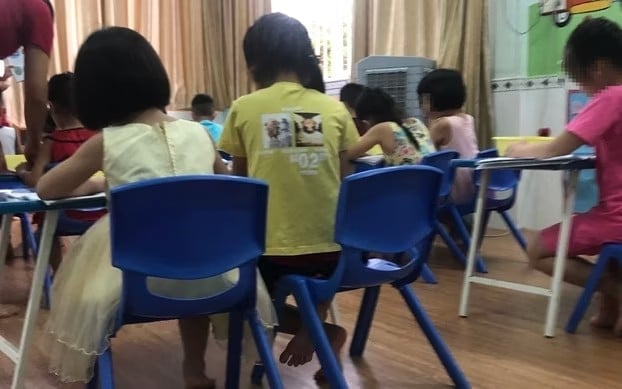
First grade students in Vietnamese class
Parents sent many comments to Thanh Nien Online after articles on the topic of "Being pressured to read and write fluently before entering first grade" . They pointed out the reality over the years that the vast majority of children in Ho Chi Minh City can read and write before entering first grade.
What do teachers who directly teach grade 1 and primary school in Ho Chi Minh City say about this issue? What do parents whose children are or have been in grade 1 say? This article will record the opinions, to ensure the privacy of the respondents, we will not record the specific names and addresses of the interviewees.
Primary school teacher in a central district of Ho Chi Minh City: "Most of the children in the class learn to read and write first"
Previously, when children studied the old textbooks, I observed that in a class, about 60-70% of children did not learn letters or do math before, but started learning from the beginning in grade 1. But since children have studied the new textbooks, I have seen that most of the children in the class have learned letters first, to know basic things like the alphabet, writing solid strokes, spelling simple syllables, and knowing how to add and subtract within 10.
I also feel that the new textbooks for primary school students require students to try harder, so it is understandable and sympathetic that parents are worried, insecure, and afraid that their children will not be able to keep up with other children, so sending their children to school before entering first grade.
I also advise my friends' children not to let them know anything about letters and numbers before entering first grade. Parents can buy tracing books and letter tracing books for their children to practice at home, teach them the alphabet, and guess letters and numbers with them so that their children do not feel overwhelmed when entering first grade.
I also hope that other teachers do not have an impatient, hasty mentality and do not take the pressure off the children. In reality, not all children are quick, bright, and absorb knowledge equally quickly, so primary school teachers need to be more patient, gentle, and give the children more time, and everything will fall into place."
Head of grade 1 at an elementary school in District 12, Ho Chi Minh City: "It's a bit difficult for teachers to enter grade 1 like a blank sheet of paper."
For example, in a class of 45 students I teach, about 30 of them already know the alphabet and can count from 1 to 10. More than 10 of them have never learned any letters or numbers, they are like blank sheets of paper. Now the curriculum is a bit heavier than before, so it is easier for teachers to require children to grasp the letters and write basic strokes. If children don't know anything yet, teachers have to teach them how to hold a pen and write strokes, which takes a lot of time.
The new textbook program now has the first lesson teaching letters, there is no lesson teaching strokes. The previous textbooks still gave students the first week to teach strokes.

Vietnamese textbook grade 1, volume 1 (Creative Horizon series), the first lesson is teaching the letter A
To make it easier for teachers, last year in Ho Chi Minh City, when the children started the new school year at the end of August, the teachers had 1 week to teach them strokes, but in the new curriculum, they started all at once, and the first lesson was to teach letters. So if grade 1 is like a blank sheet of paper, it is a bit difficult for teachers.
In the place where I teach, children who don't know anything yet get more private tutoring, and I encourage them. Many children are scared when they see their friends writing a lot, so I encourage them not to be scared, just keep trying. When I have free time, I tutor them in writing more.
I also invite parents in and instruct them on how to hold the pen, where to start and where to stop so that they can do it together and teach their children, because there is not much time in class to teach the children.
A few years ago, I taught a class with 8 students who knew nothing (had not learned letters or numbers before entering first grade - PV). By the end of the semester, about 6 students could keep up with their classmates, while 2 students could not absorb and could not keep up with their classmates.
But it should be emphasized that if the children have completed the first grade program and can read and write fluently, they will not study in a focused manner when entering the first grade. As for the children who only grasp the basics of letters and numbers, they will study in a focused manner when entering the first grade.
So I advise parents whose children are about to enter first grade to help them at home recognize the alphabet, compound letters such as "nh", "th", "ch", "tr"... and help them read compound letters so they can remember them longer. Buy them exercise books, tracing paper, and alphabet paper. Or buy toy letter sets so that children can look at the pictures to remember the letters faster. Guide children to combine basic sounds such as "ca", "ba", "nghi"...
When entering the first grade, children will start writing dictation (listening and writing) in the second semester. When children can read fluently, they will start writing better dictation, so in the pre-primary stage, they should not rush to write dictation. That is too early.

Pre-first graders in a pre-literacy and pre-math classroom
Parent: "The whole first semester, the teacher scolded me all the time"
I have a child in 2nd grade. And I always advise my friends' parents to let their children learn letters and numbers before entering 1st grade. I will also let my youngest child learn letters and numbers first.
I used to think that children should only start learning the first letters when they enter first grade to ensure science and not take away their childhood. But when my child went to school, in the first semester of first grade, I realized I was wrong. In my child's class of 50 students, 46 of them knew how to read and write. The remaining 4 did not know anything, including my child.
The whole first semester, my child was very weak, I had to tutor him every day, which was very tiring. The teacher scolded him all the time. My experience shows that it is not necessary to let my child learn the entire first grade program first, but at home, parents can teach their child to recite the alphabet, write basic strokes well, grasp letters well, and go to the bookstore to buy handwriting practice books for the child to practice drawing firmly.
When I first entered first grade, my child was not yet familiar with school, friends, or teachers. In addition, I did not know anything about letters or numbers, so it was even more difficult for me and my parents who accompanied me were also more tired.
Source link


























































Comment (0)